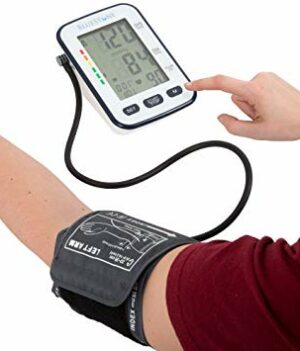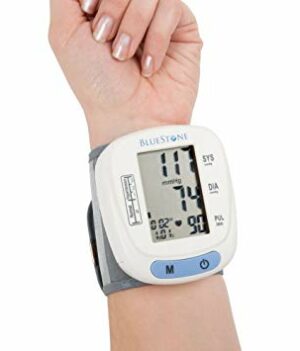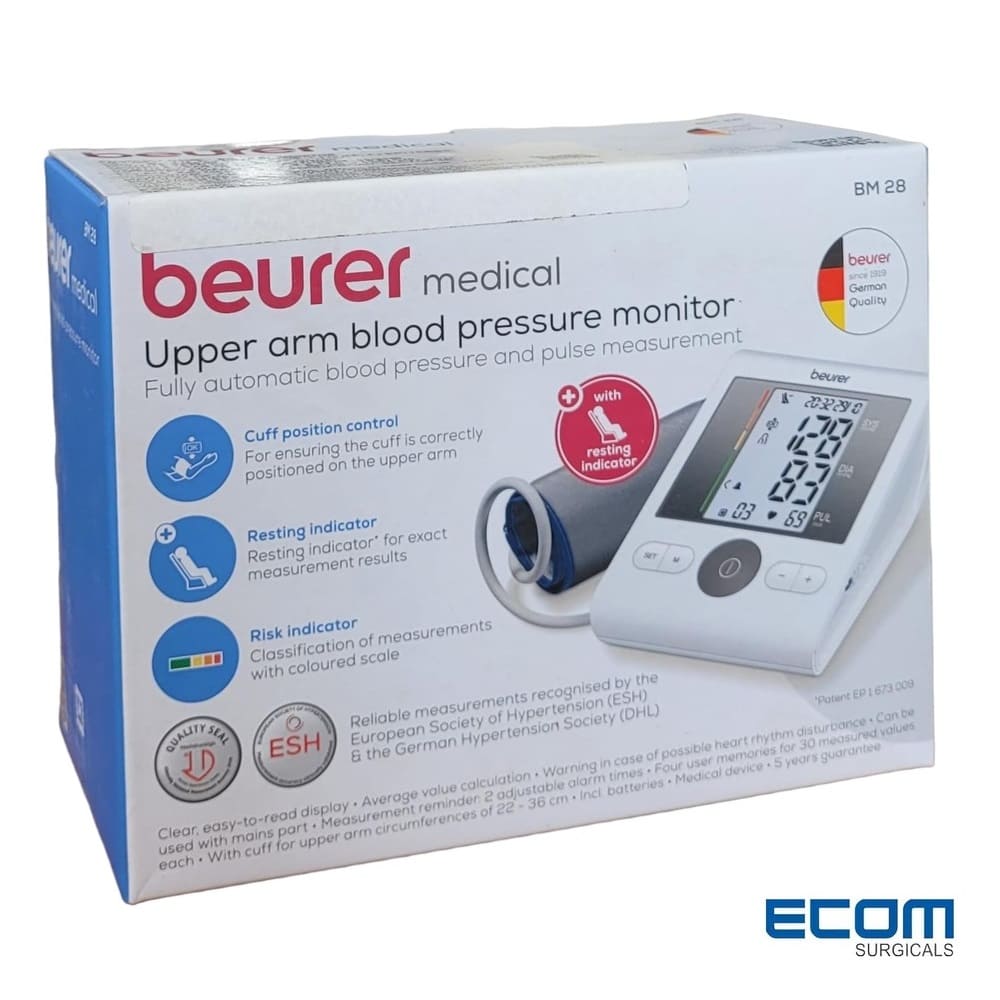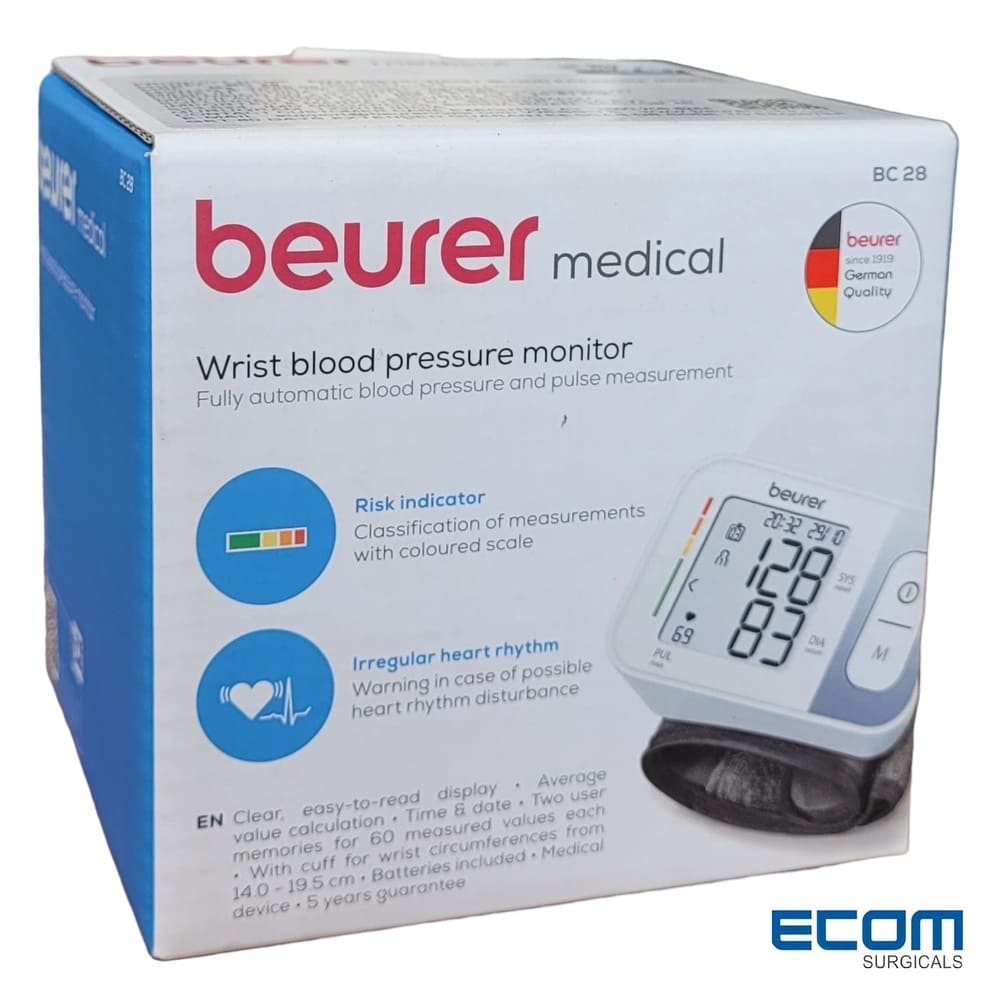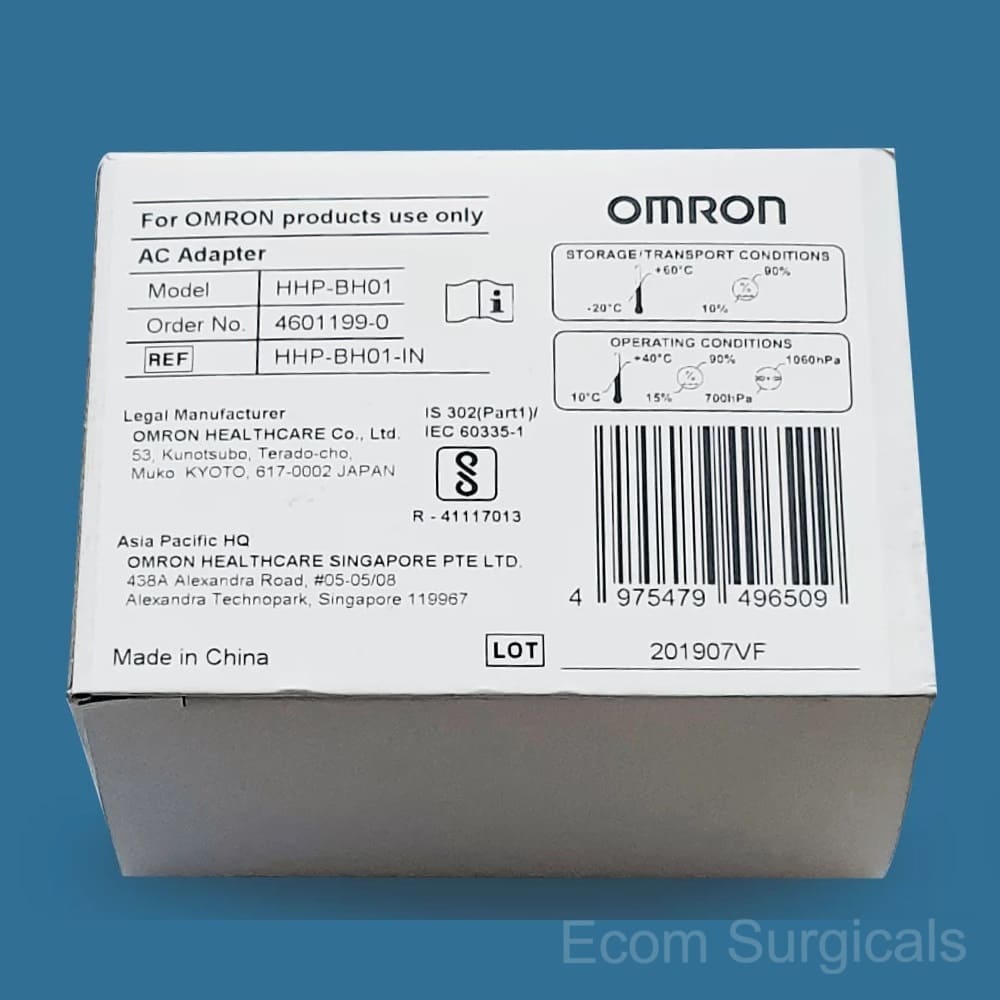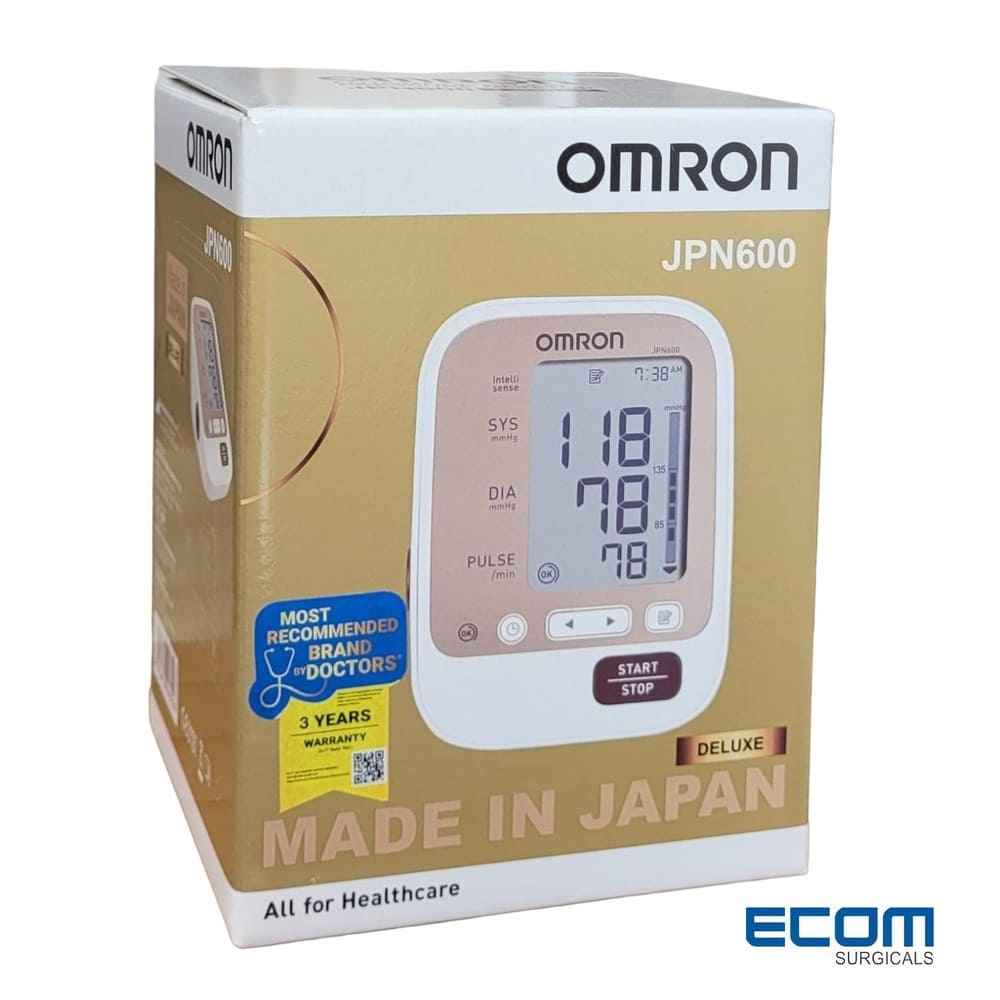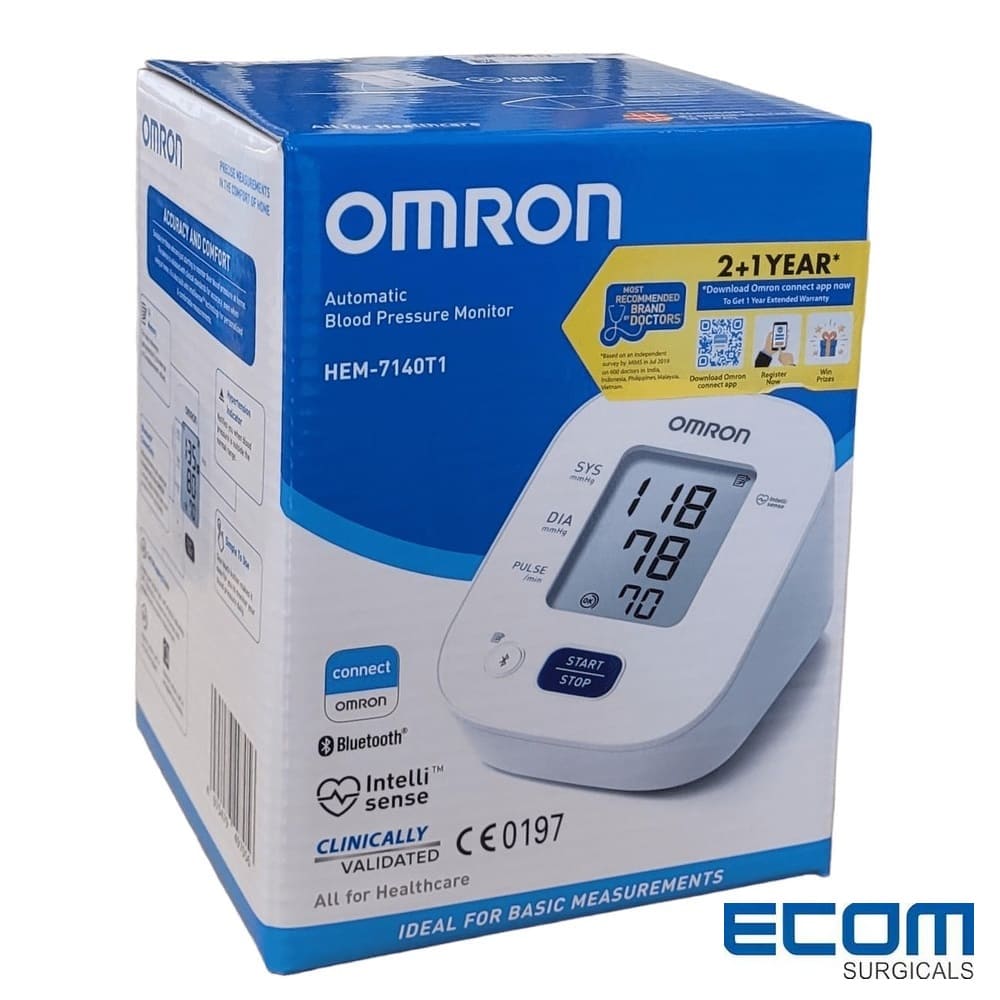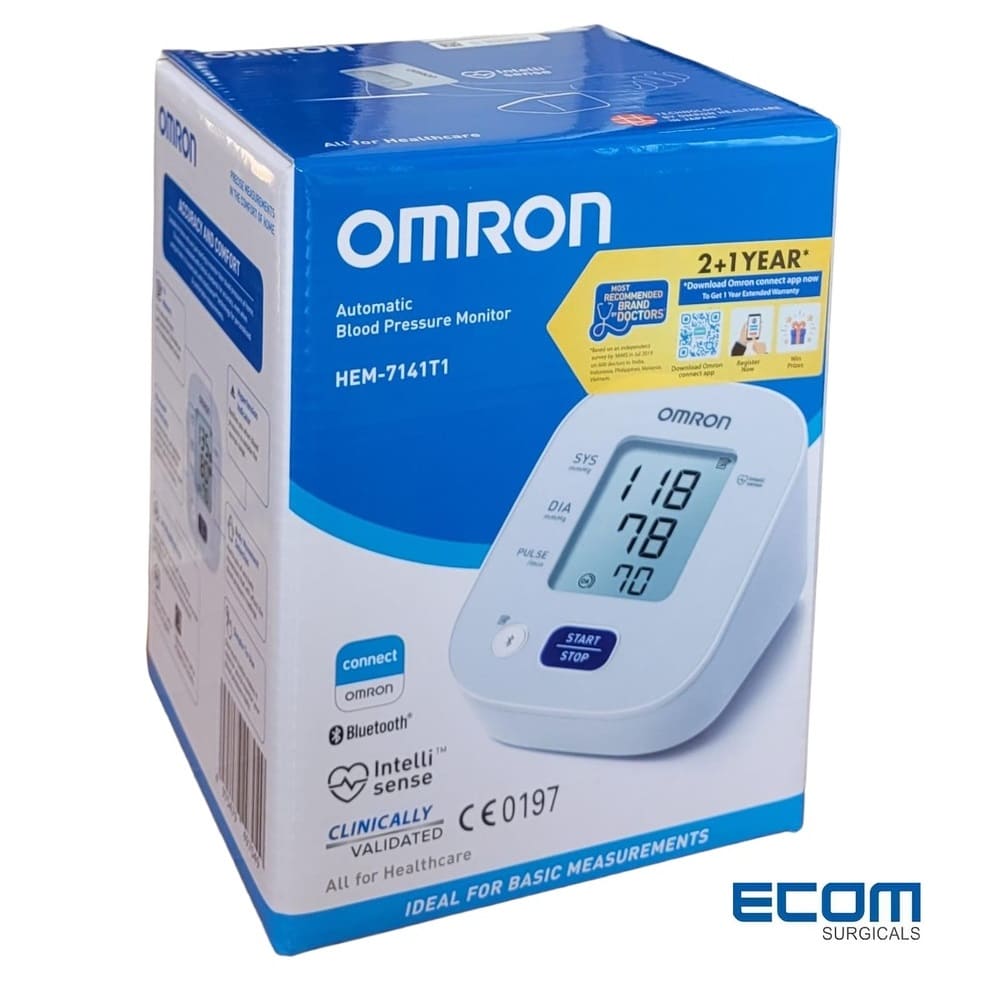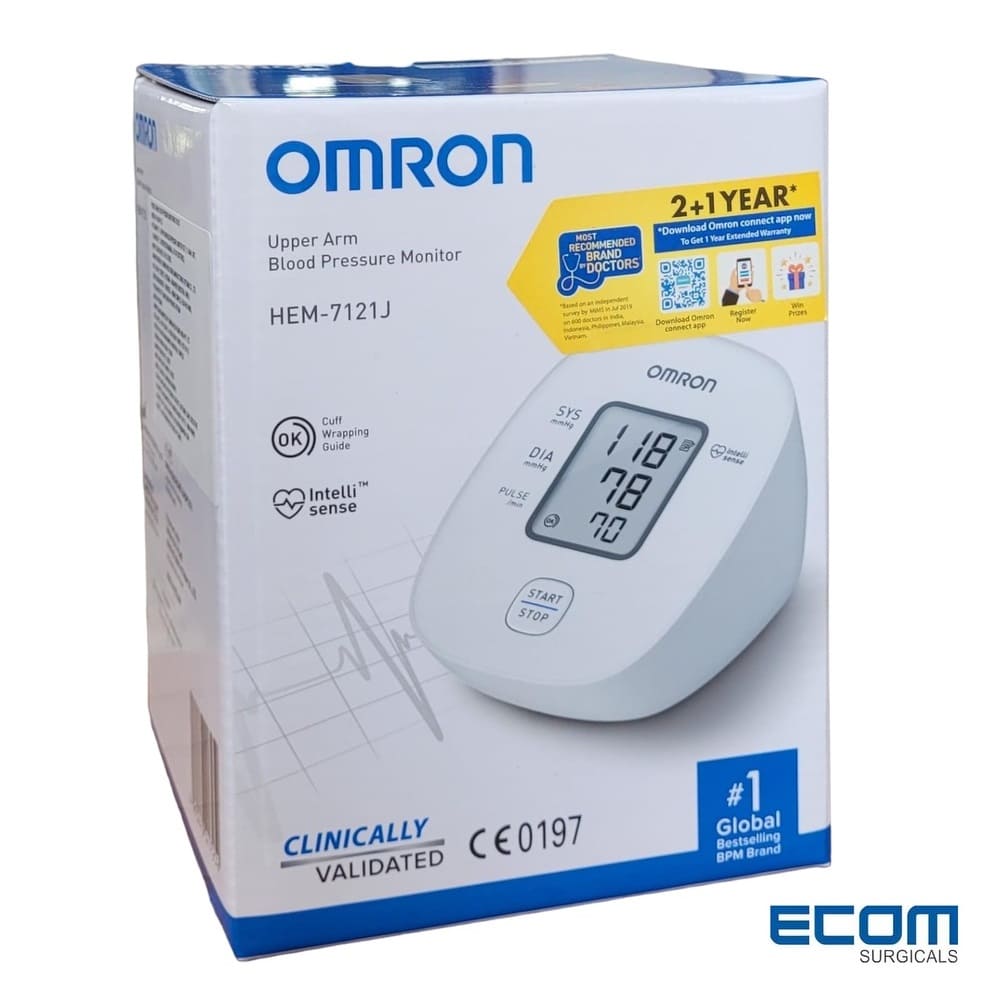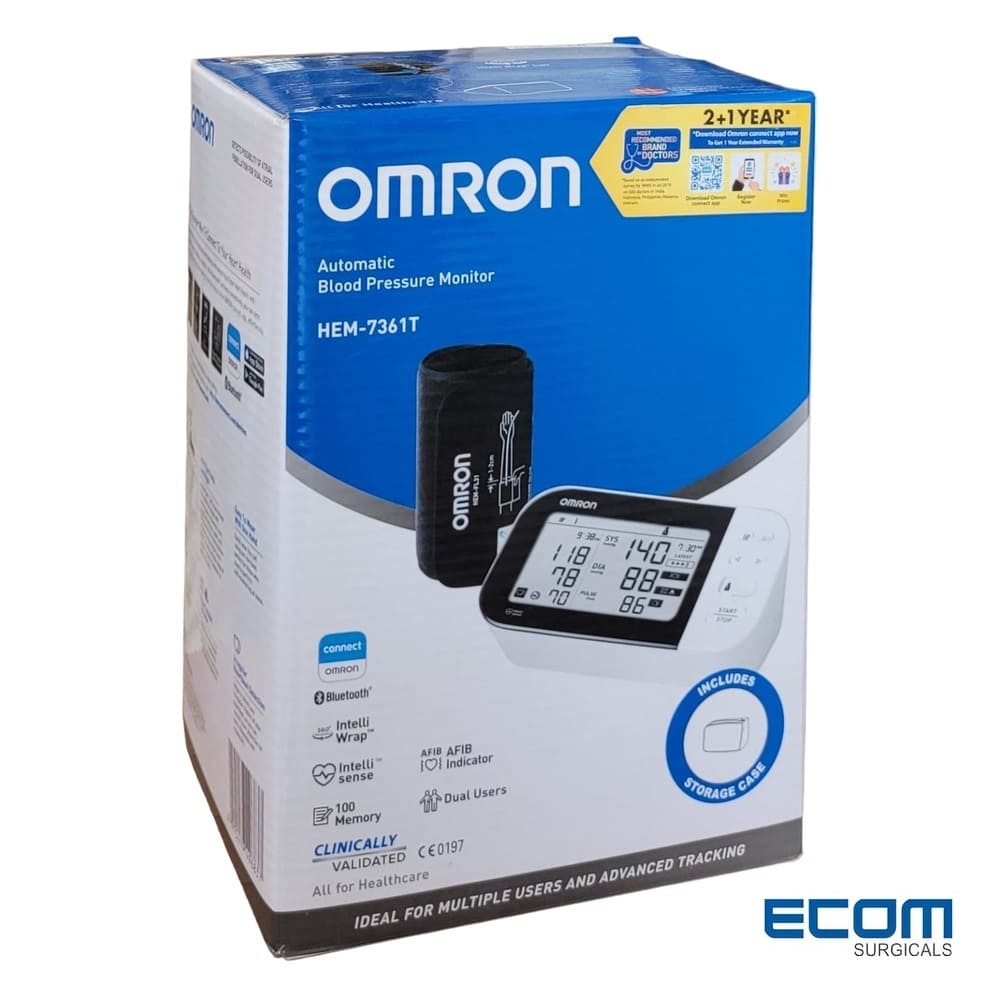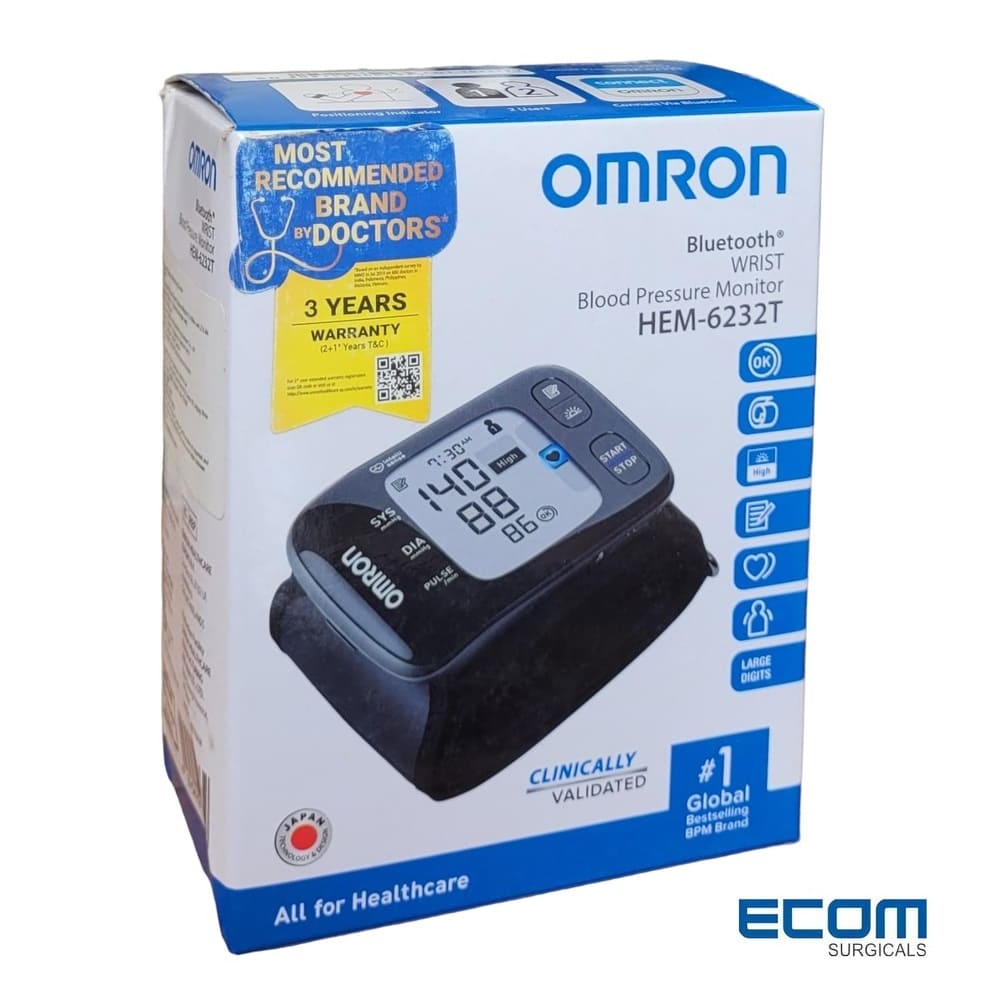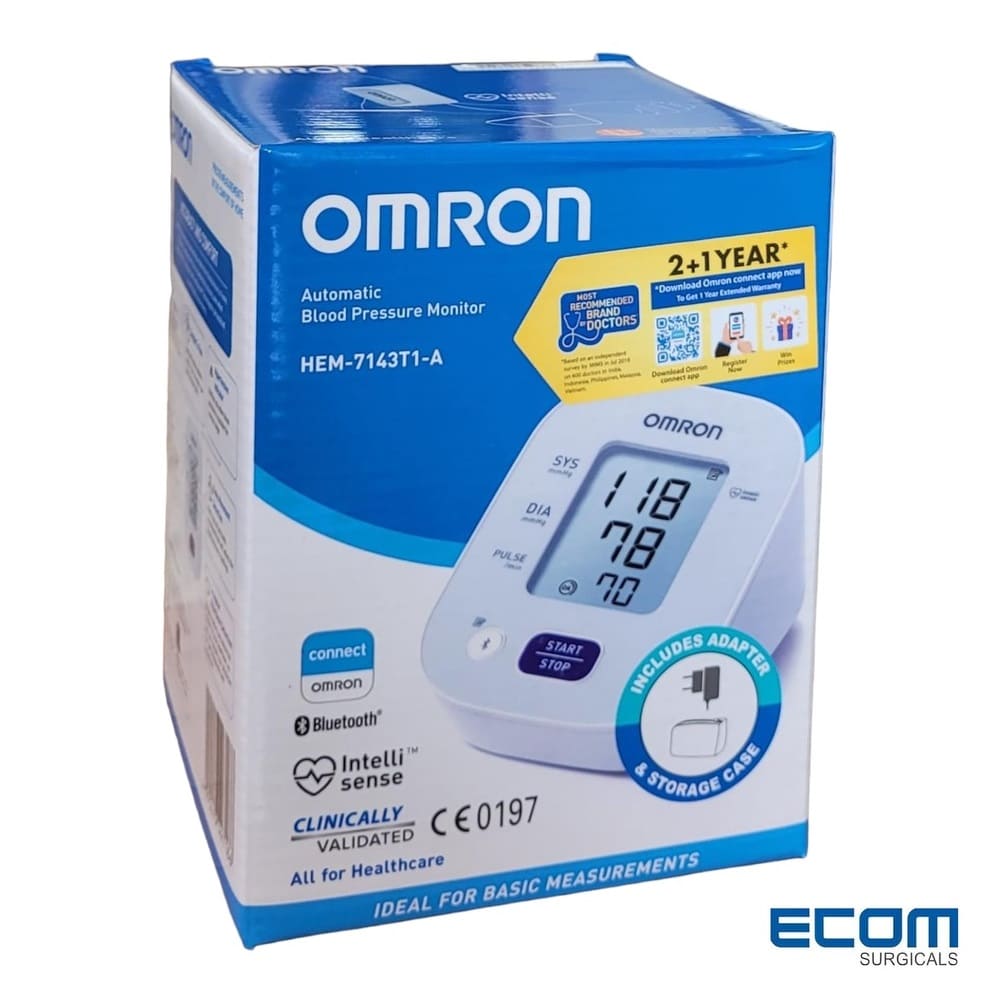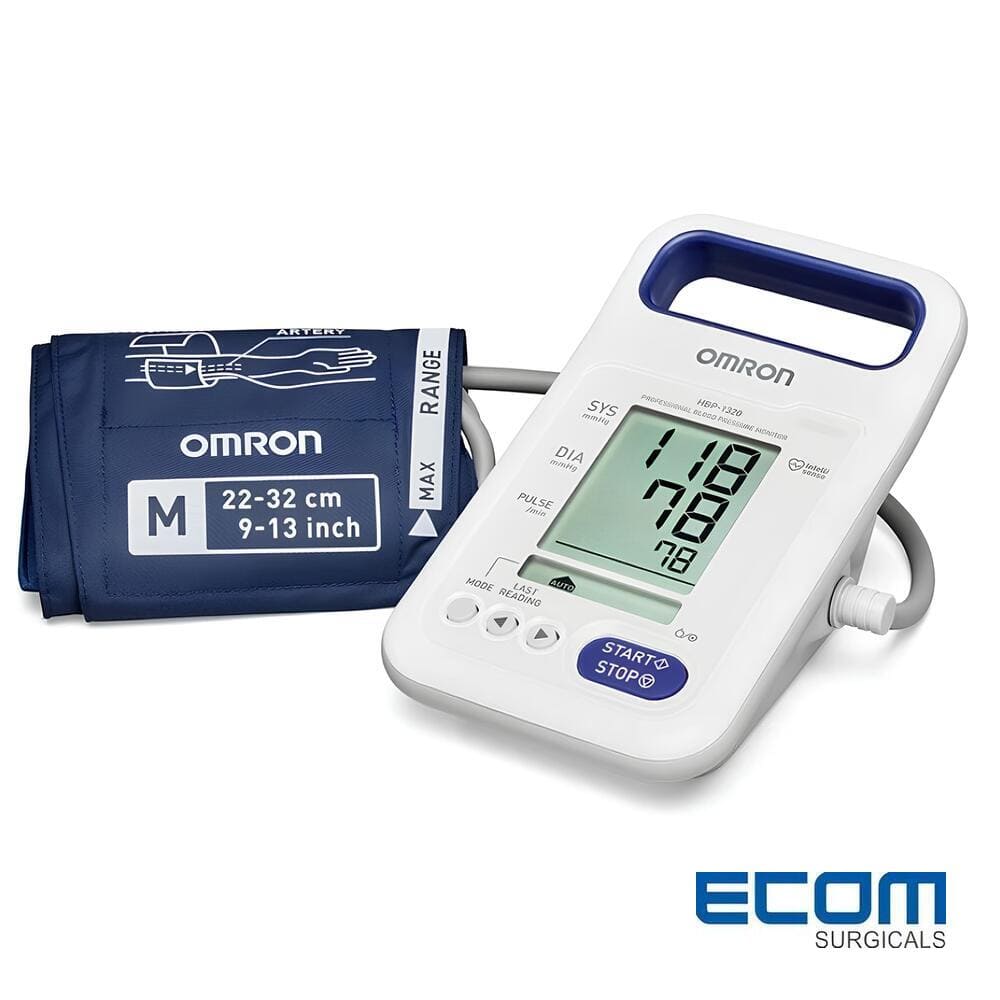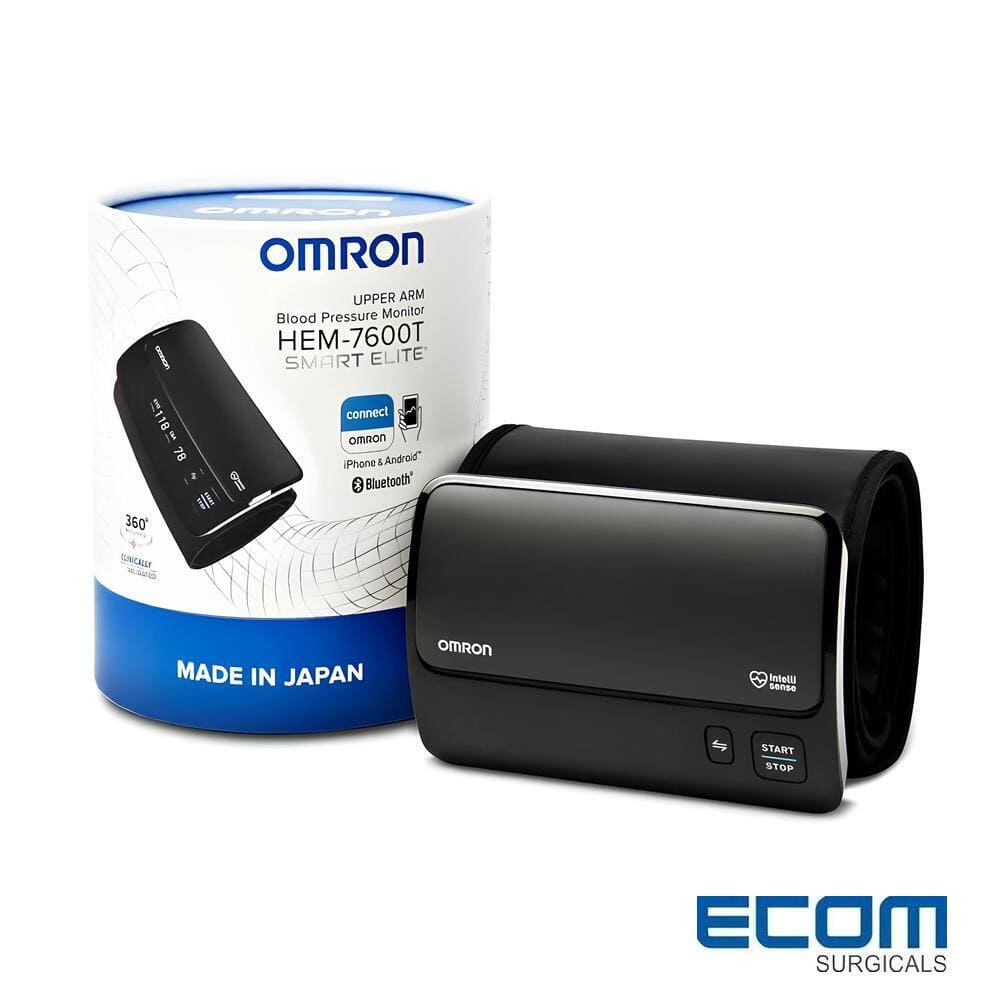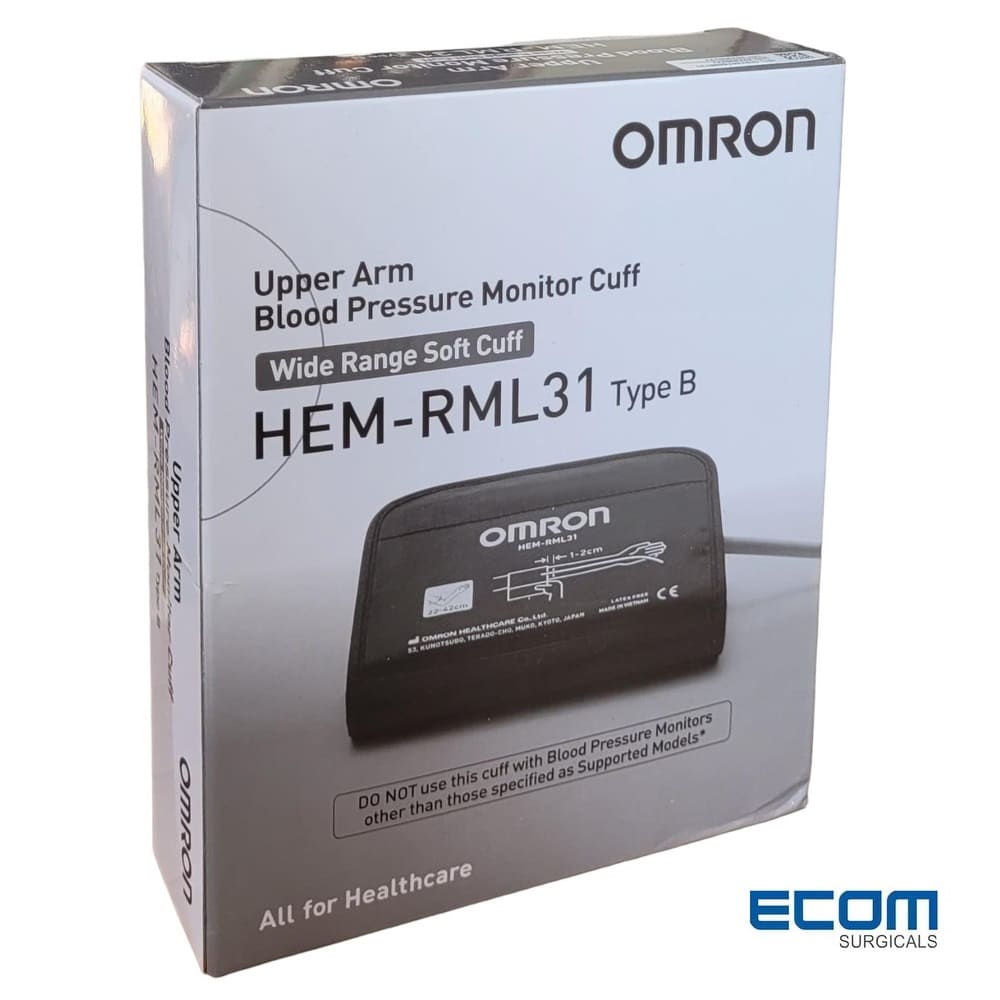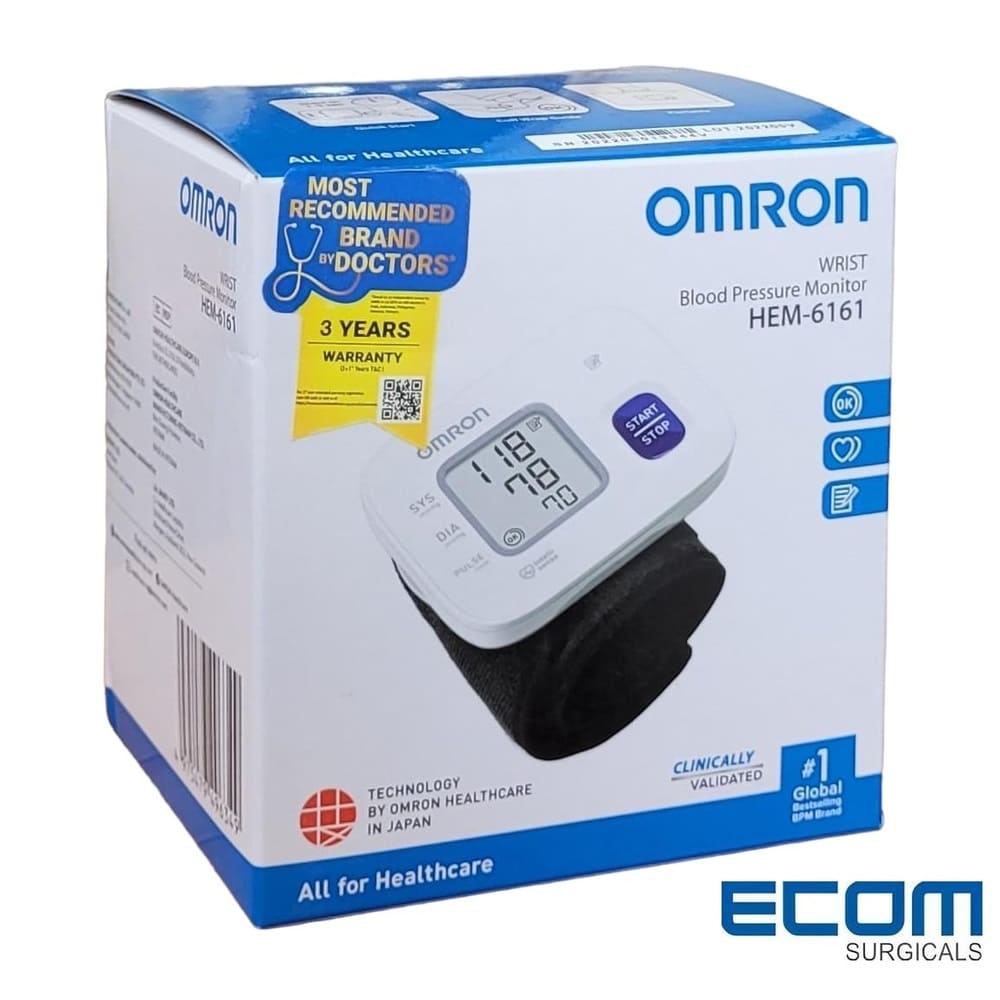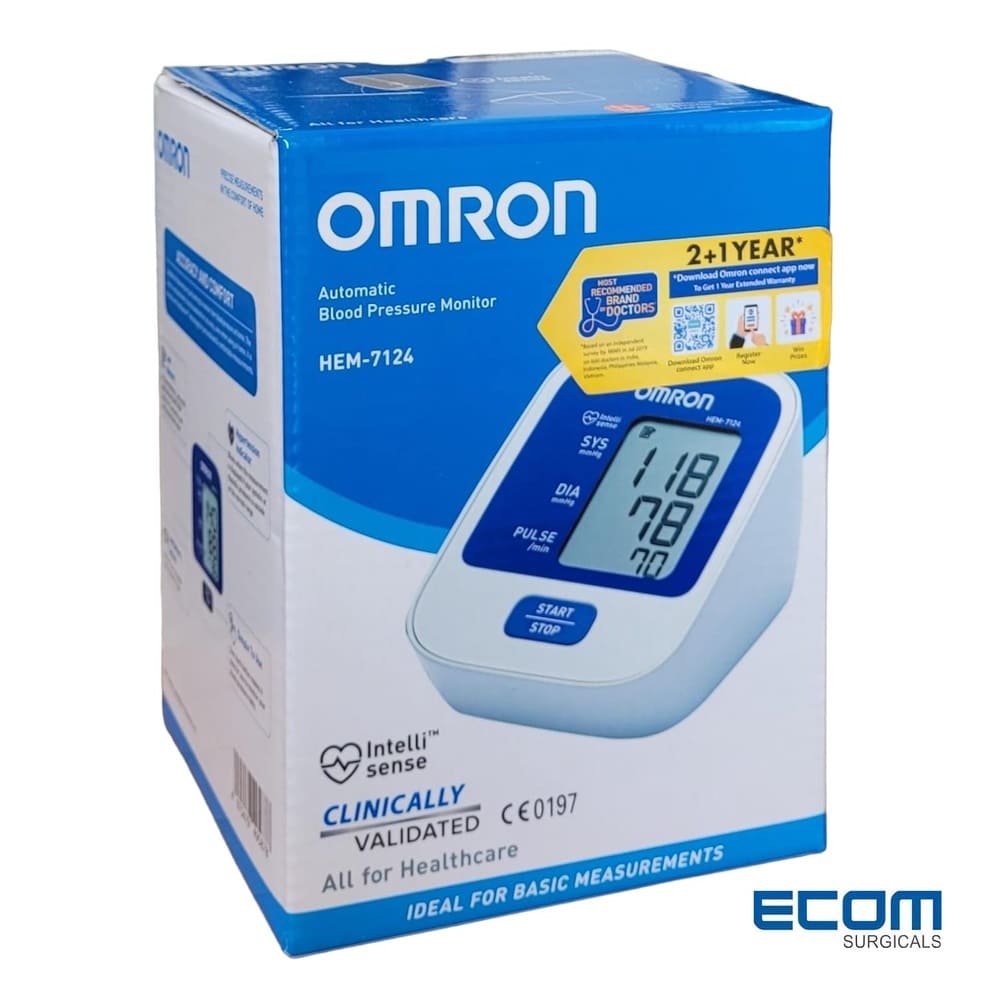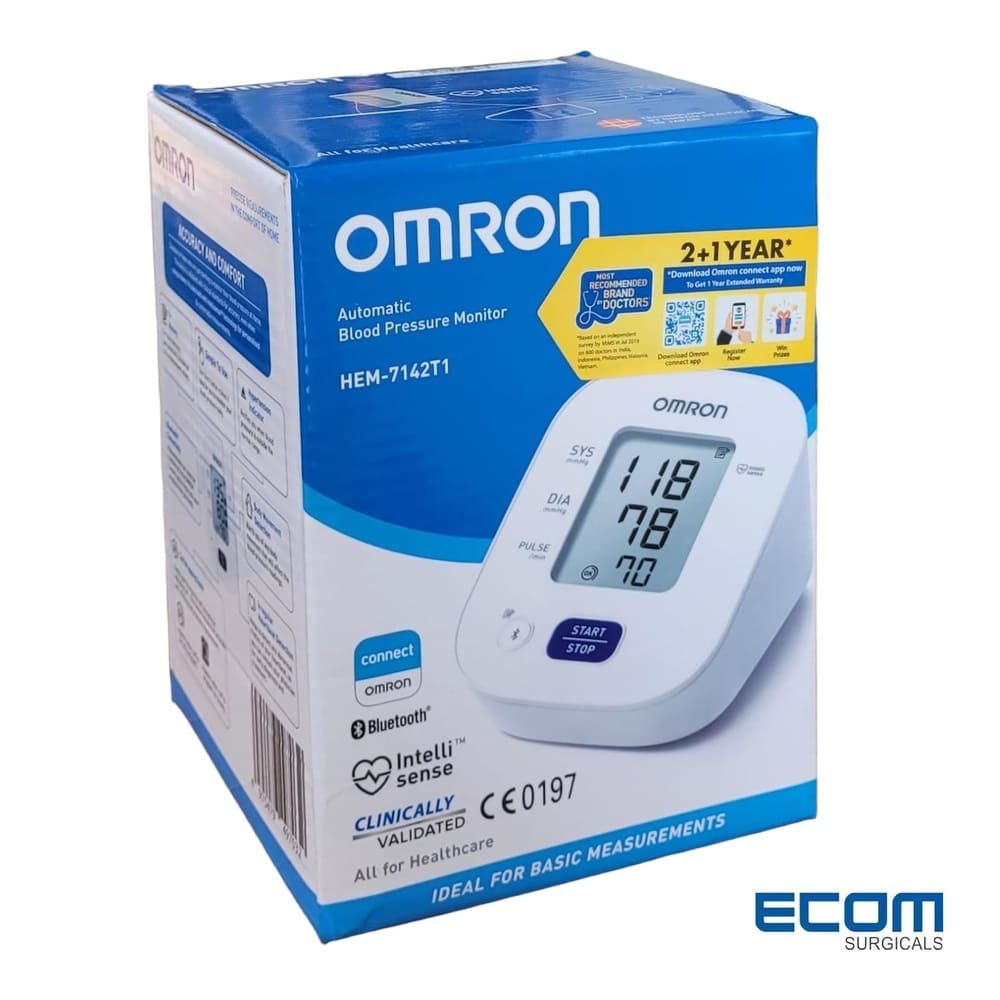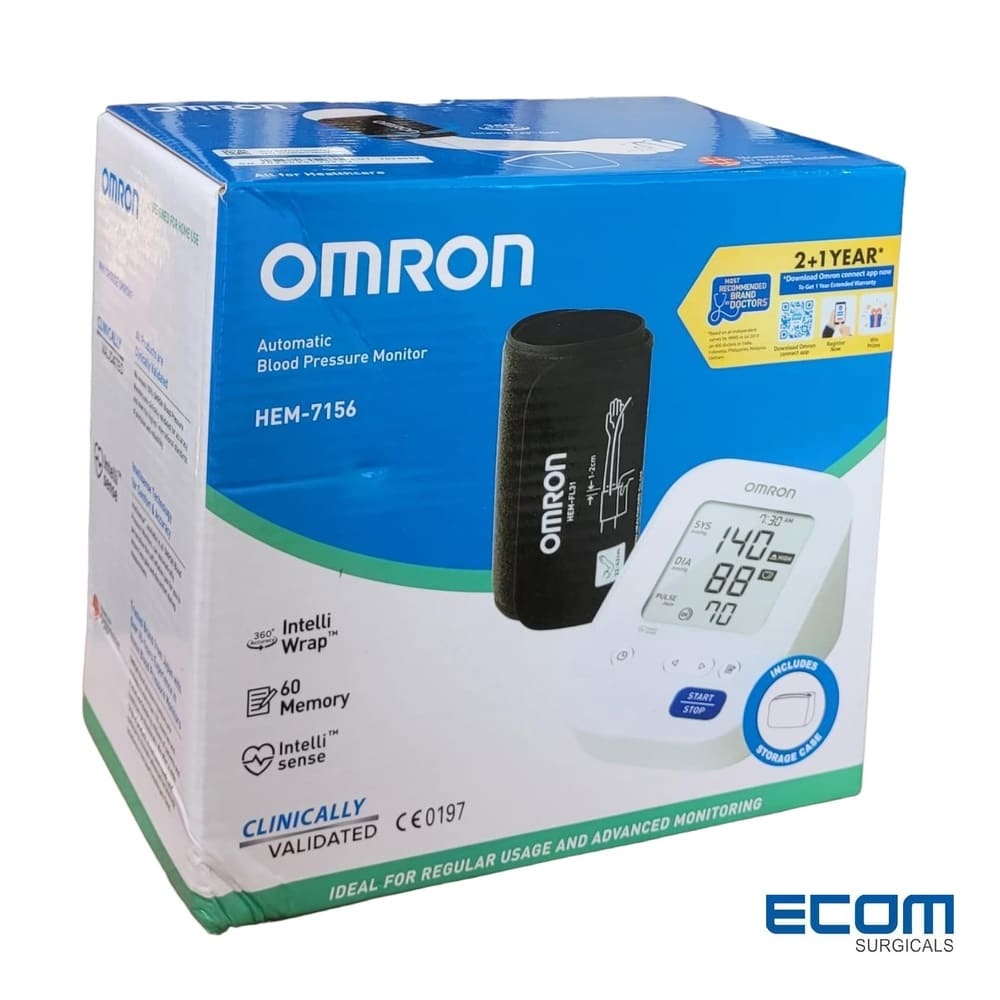MRP:
Rs. 2380/- (without adapter)
Rs. 2760/- (with adapter)
3-year manufacturer guarantee
₹ 2,380.00₹ 1,599.00MRP: Rs. 1900/-
5-year manufacturer warranty
₹ 1,449.00MRP: Rs. 590/-
Only for Omron BP Monitors
₹ 589.00MRP: Rs. 5370/-
Made in Japan, 3-Year Manufacturer Warranty
₹ 3,799.00MRP: Rs. 2560/-
3-Year Manufacturer Warranty
₹ 1,849.00MRP: Rs. 2900/-
3-Year Manufacturer Warranty
₹ 2,099.00MRP: Rs. 2470/-
3-year manufacturer warranty
₹ 1,749.00MRP: Rs. 6990/-
Detect possibility of Atrial Fibrillation for you and your spouse.
3-year Manufacturer Warranty
₹ 5,299.00MRP: Rs. 5890/-
3-year manufacturer warranty
₹ 4,399.00MRP: Rs. 3760/-
3-Year Manufacturer Warranty
₹ 2,849.00MRP: Rs. 14500/-
₹ 9,499.00MRP: Rs. 10980/-
Tubeless technology, 360 degree accuracy, attached intelli wrap cuff which fits arm circumference 22 -42 cm.
₹ 8,599.00MRP: Rs. 890/-
Supported models are, HEM 7120, HEM 7121J, HEM 7124, HEM 7121, HEM 8712, HEM 7130, and JPN 600.
₹ 849.00MRP: Rs. 2345/-
Large Digital Display, 30 Readings of Memory
₹ 1,749.00MRP: Rs. 2310/-
3-Year Manufacturer Warranty
₹ 1,849.00MRP: Rs. 2640/-
with Hypertension Indicator, Body Movement Detection and Cuff Wrapping Guide.
₹ 2,049.00MRP: Rs. 3860/-
Wide Range Arm Cuff: Fits arm circumference 22-42 cm.
3-year Manufacturer Warranty
₹ 3,860.00₹ 2,799.00
Every adult, especially those above the age of 30, should regularly monitor some of the primary health indicators like blood pressure. Measuring blood pressure with a home blood pressure monitor takes merely a couple of minutes. Also, it is almost effortless, low-cost, and yet can be lifesaving.
Hypertension is called the ‘silent killer,’ since many people don’t know they have it until something untoward happens. Owning a home blood pressure monitor is the only way to detect this silent killer at the earliest and keep an eye on it.
Hypertension and cardiovascular diseases are the leading causes of mortality and morbidity globally. Specific ethnic groups are more prone to them. South Asians or Indians, due to their dietary habits, and perhaps even more due to a lack of physical exercise, are considered to be at the highest risk. Studies in Western nations have shown that Indians and South Asians have the highest prevalence of hypertension and cardiovascular diseases.
So how common is the problem? Well, the latest Indian research shows that more than 30% of Indians are hypertensive; yes, that is genuinely a lot. This statistic does not include the latest recommendation by the American Heart Association. According to that, another 30% or more of the adult population is at borderline (systolic between 120-130, or diastolic between 80-90 mmHg). That means two-thirds of adults have a pressing reason to measure blood pressure on a regular basis.
Why you should have a blood pressure monitor at home?
Considering the widespread nature of the problem, one simply cannot visit a physician’s office each time he or she feels unwell or has doubts. Self-monitoring is the most dependable way to know your blood pressure. Moreover, borderline blood pressure needs regular monitoring. Marginal blood pressure is treated with lifestyle changes like exercise, stress management, and low salt intake, and rarely with medications.
Another reason to consider measuring blood pressure at home is that some people may have an occasional rise in blood pressure, rather than having a permanent issue. In such cases, home monitoring is the best option.
Measuring blood pressure at home always gives you a more accurate reading. Most people are not aware of the so-called “white coat syndrome.” Research shows that when a doctor measures blood pressure, people become more stressed and worried. Hence, this is leading to false higher readings and wrong diagnosis of hypertension. While at home, people get more relaxation and thus achieve more accurate results.
Also, regular monitoring would save you from a heart attack and a debilitating or fatal stroke. Cardiovascular diseases are on the rise in India.
When to measure blood pressure?
Measure blood pressure two times a day, once in the morning, sometimes after waking up but before exercise or taking medications. Another time is in the evening.
- Always measure the blood pressure at the same time of the day for better comparison.
- Measure blood pressure in a quiet environment.
- Do not measure blood pressure if you are feeling stressed out, too cold, anxious, have a full bladder, and so on.
How to measure blood pressure?
- Relax a few minutes before taking a reading.
- Sit comfortably with the arm supported by the table, and the arm should be at the level of the heart.
- Do not cross your legs.
- Make sure that cuff placement is about 2 cm above the elbow, and that the tubing is facing the center of the arm in front. Some equipment may have an arrow marking to show that.
How to choose a blood pressure monitor?
Choosing the right kind of equipment is not rocket science. What’s vital is just to consider the manufacturer. Omron is one of the leading manufacturers in the world and is popular for making the most accurate blood pressure monitors. Most of the blood pressure monitors also measure heart rate. Another thing to consider is the duration of the warranty.
Many people worry about the accuracy of these devices, which is entirely unnecessary. As already mentioned, measurements taken at home are even more accurate due to the absence of ‘white coat syndrome.’ These devices are calibrated and proven for accuracy.
However, there is one exception, when mercury equipment (often used by physicians) may provide more accurate results. That is when a person is suffering from severe arrhythmia (an extremely irregular heartbeat), but then most people would know about it in advance if they have the problem of missed beats and so on. Moreover, home blood pressure monitors may, in fact, help in the diagnosis of irregular heart rhythm in some cases.



